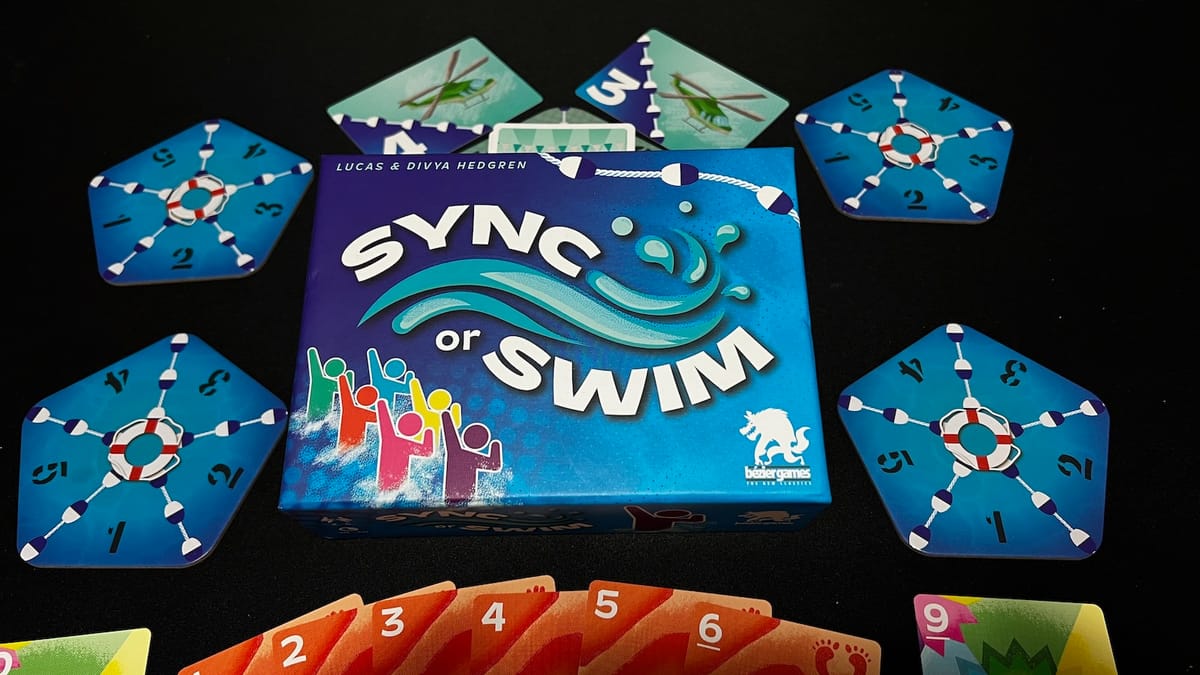
Nose plugs, frilly swim caps, matching one pieces, cooperative card game play…all things associated with synchronized swimming. At least, these are the things that come to my mind. My wife got excited because, being raised on golden age Hollywood movies, she was immediately brought back to routines from Esther Williams swimming around with Tom and Jerry. To be honest, I was a little skeptical about the theming of this new cooperative set collection game, but despite some small flaws, Sync or Swim was a fun game to get in front of a group.
Kickstarter funded in February of 2022 and shipped later that summer, from Bezier Games comes a 3-6 player cooperative game called Sync or Swim. The game is played over a series of six rounds with each round getting progressively harder. Each round, players must perform a task in sync with other players. Tasks range from matching, or not matching, suits, symbols, and a variety of other combinations. Throughout the course of the game, a companion app is conveniently rating your performance and gives you a final team score at the end of the game.
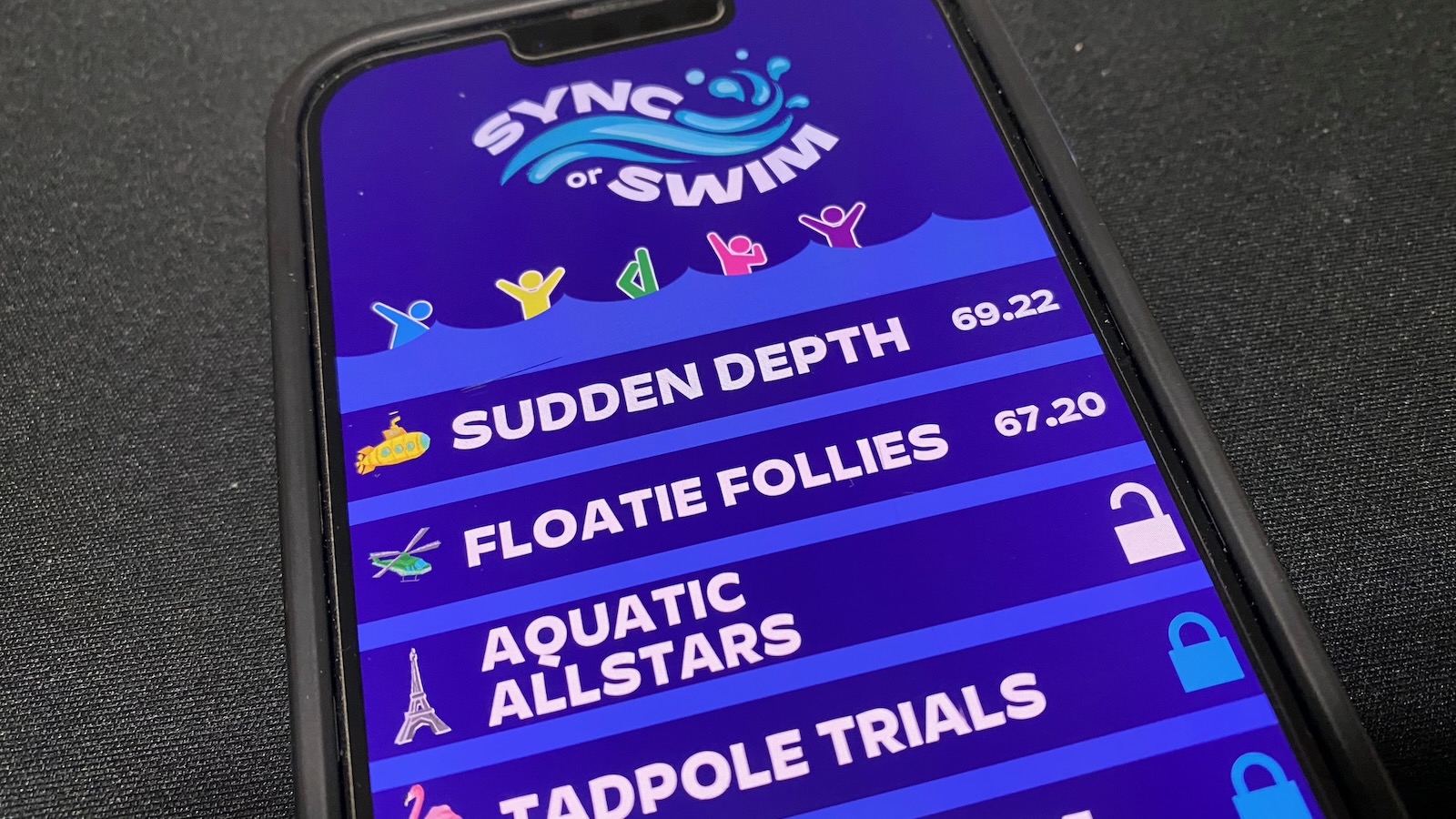
Let’s start with the app itself. The app and its awkwardly robotic and Patrick Warburton-esque announcer take you through the steps of the routine, including set-up, gameplay, and final scoring. The home screen lets you determine player count, has a link to a “how-to-play” video on YouTube, and links you to other set up options such as sound volume, unlocking content, and resetting leaderboard scores. Players also have the option of working through a campaign or doing a random routine. In Campaign mode, players progress through a series of ten included routines, plus five more if you nabbed a kickstarter copy, that are represented through physical cards from the box. As each routine is completed, the next routine is unlocked. Players can also unlock all routines from the option menu if their desire to jump in outweighs the desire to play through progressively like a good rule follower. The five cards associated with the selected routine are placed on the table around a central board face down.
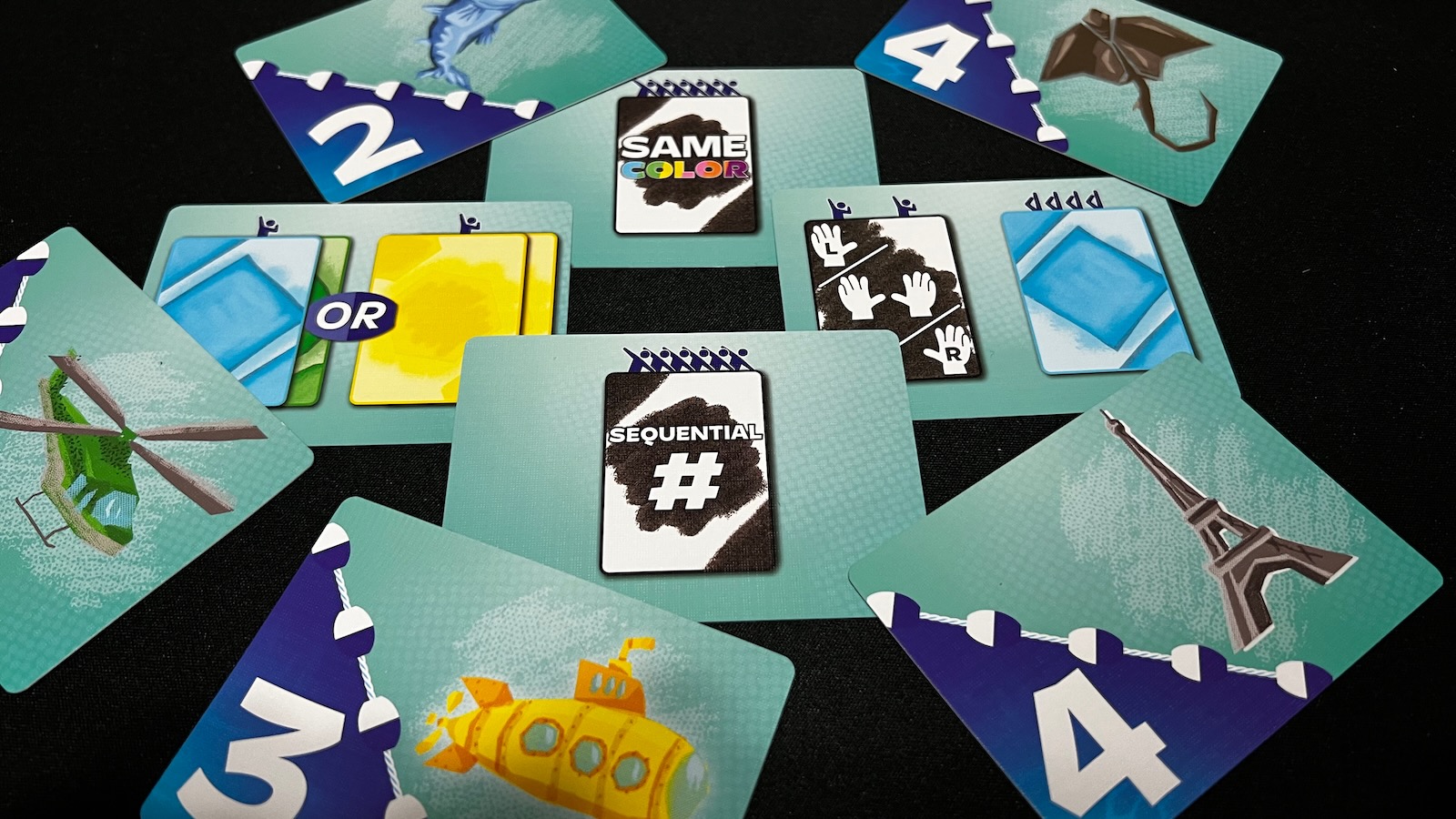
Next, the app will tell you how to construct the player deck with a variety of “sync” cards depending on player count. Sync cards come in different colors and are labeled with symbols in the form of hands or feet. A number of wild cards and gray cards can also be added. These sync cards are used to complete the elements of a routine. Each round a new element is turned over and players can begin discussing a strategy. For example, the first card in the first campaign requires all players to have the same color card placed in lane 1 of their player boards before the timer runs out. The tasks can get progressively more complicated and difficult as the game progresses. Some require you to play multiple cards such as presenting two combinations of cards to choose from or playing three cards without a foot icon. Some tasks require different things from different players such as two playing cards with hands and everyone else playing yellow cards. A helpful guide of symbols is provided on player aid cards and the back of the rulebook.

At the beginning of the game, a team captain is selected and a number of sync cards, which increase in number as the game progresses, are dealt to each player. Once ready, the team captain starts the timer and chaos ensues. With the goal of meeting each element of the routine, players can trade cards, communicate, or dive into the remaining cards in the sync deck. The big rule is that you can never show cards to other players, however, you can tell everyone what is in your hand. To get into the deck, you must discard two cards from your hand and can draw one card at a time. If you don’t like the card, then discard and draw again, repeating the process until you find what you need. However, if you break this process, you will need another two cards to dive back into the pile. When everyone has met the goal by placing face down sync cards in each active lane, the team captain must tap the two circles on the app to stop the clock. Players will then reveal the cards in each lane to see if the team is in sync. If the goal is collectively met, then players will move on to the next round. If time runs out or a player puts a wrong card in one of the lanes, then 10 seconds will be added to the team time and the players will reset and try the round again.
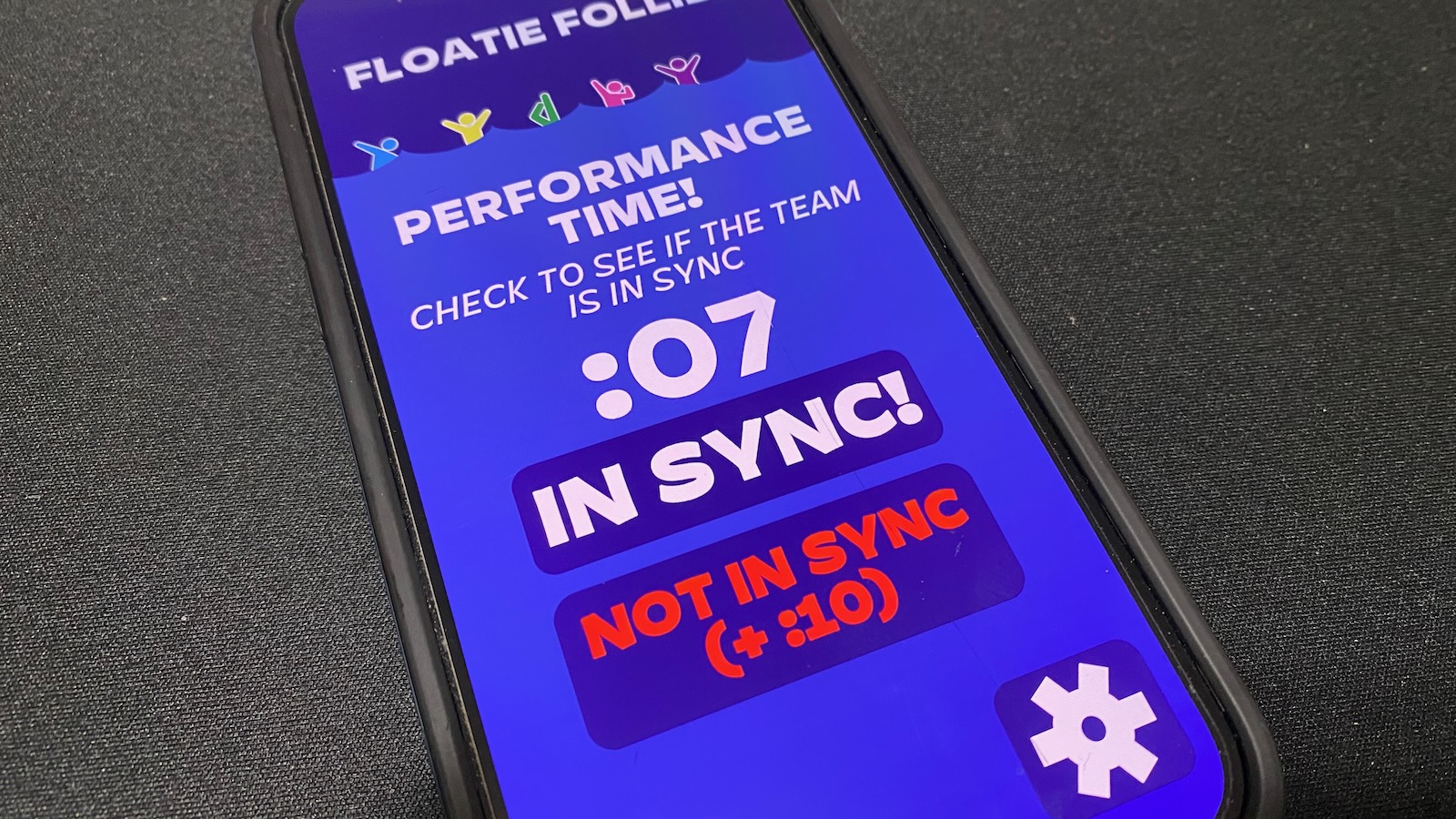
As the game progresses, the tasks assigned to each lane get progressively harder and each builds upon the previous ones. For example, in round three, you are completing the tasks from Round one, two, and three. To assist you, you are dealt more cards to start, but this just gives empty hopes and promises that it will make the tasks any easier. Once per game, a twist is introduced to make the game a little harder from that point forward. In the first campaign, and I’m not spoiling anything since they give it away in the rule book, when the twist is revealed, you repeat the previous round, but must pass your hand to the next player anytime you place a card in a lane. Another twist only allows the team captain to speak once the round begins. Once a twist is introduced, it will be in place until the end of the game.
If you can make it to the end of the six rounds, the app will then give you a final score based on execution (how many rounds or out of sync performances you had), synchronization (all about the time taken in planning, in gameplay, and expired timers), and performance difficulty (determined by the required tasks on the cards). Teams can try to improve on their score by retrying the routine, moving on to the next routine in the campaign, or end the game by drinking a gatorade or throwing the cards on the ground in frustration.

Overall, the component quality of this game is what we’ve come to expect from Bezier Games. The box is small, but fits components nicely. The player and central game boards are made of sturdy cardboard and the cards are of a good quality, which is nice in a game of constant shuffling and slamming cards on the table. The designs on the back of the cards make it easy to find the different routine sets and the colors in the game are warm and inviting and make you think of the water. The rulebook is laid out nicely, however some more time could have been spent clarifying some rules, such as deck diving. It was confusing for the groups I played with about what required two cards to dive and what required one. A simple FAQ section or more detail would have been helpful. Also, the rulebook referred to a help section in the app, but no help section was to be found other than the “how to play” video, which didn’t address the issue above.
App driven games can be hit or miss for me. Sometimes, players can get the feeling that most of the gameplay is on the app and why did I even buy a board game? A lot of times, I play tabletop games to disconnect from technology. Bezier Games has experience with app driven games with their One Night Werewolf and sequel packs. With this game, the app complements the gameplay and takes the work out of timing and scoring that would have been more complicated without it. The cooperative setting and relatively low complexity of the game means that the app doesn’t detract from the overall experience, rather, it enhances it.
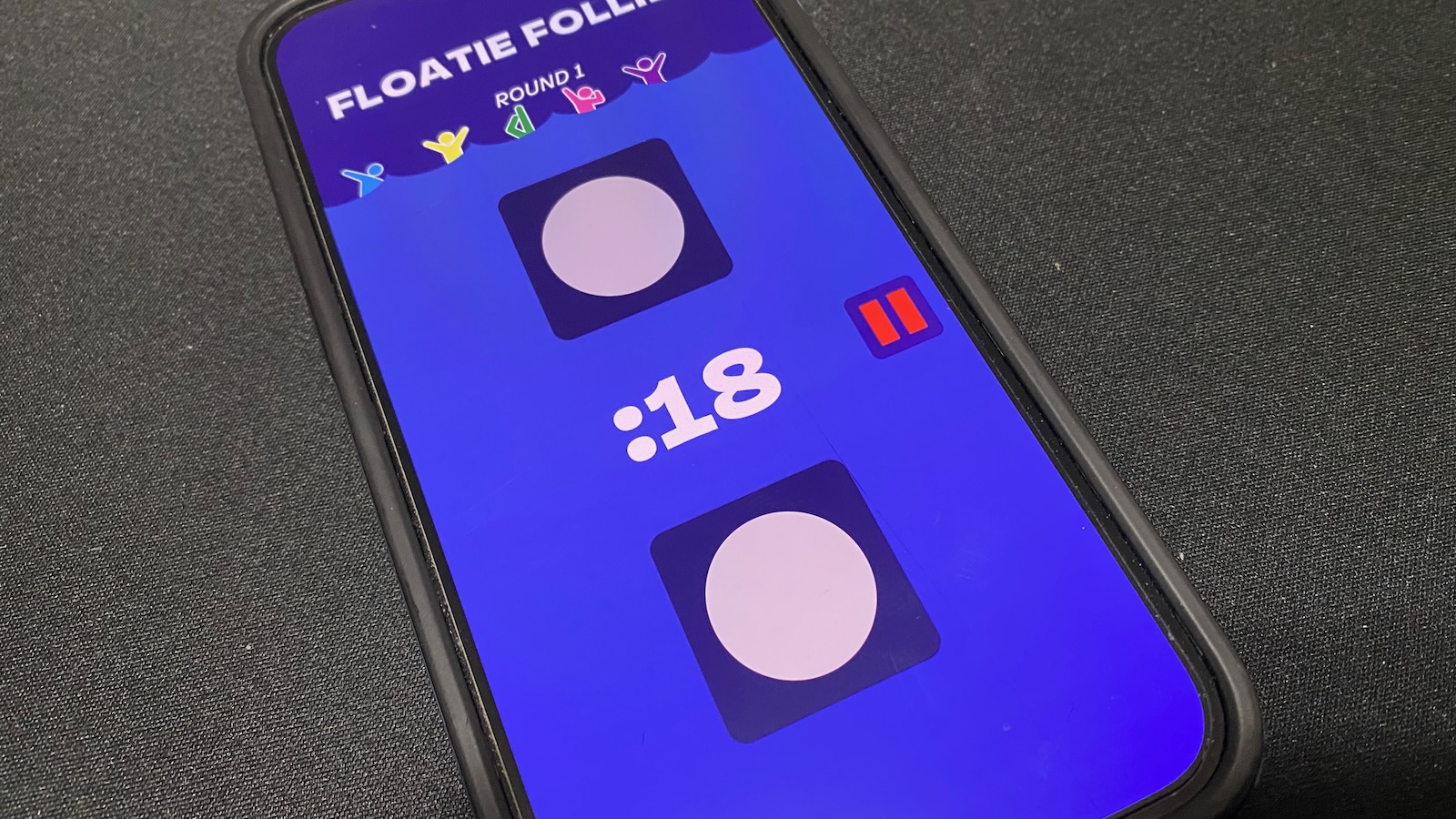
The gameplay is upbeat and truly requires cooperation and teamwork to be successful. If players are not locked in, it is easy to throw down a wrong card and ruin the whole round. In one of our games, we failed a round a few times because a rouge foot made it into a no feet routine element. Another fun element is the random routine feature. After playing through the campaign, this feature pulls cards from unlocked routines and makes a new experience allowing for a wide range of replayability. Some more recent cooperative card games can be harder for groups to grasp, however, this game gives an easier entry level and can entertain a wider variety of ages. The high energy and cooperative element of matching symbols, makes this a much better experience than the social deduction and word based party games popular in a lot of groups and this is one that will stay in the collection for a while.
Sync or Swim
Great
An entertaining app-driven cooperative card game full of energy and teamwork forcing players to complete routines and put up their best score!
Pros
- A well built app enhances game play
- Cooperative and high energy card game
- A progressively more challenging campaign and randomized routines for replayability
Cons
- Some rule questions with unclear answers
- Robotic voiceover a little unnerving
